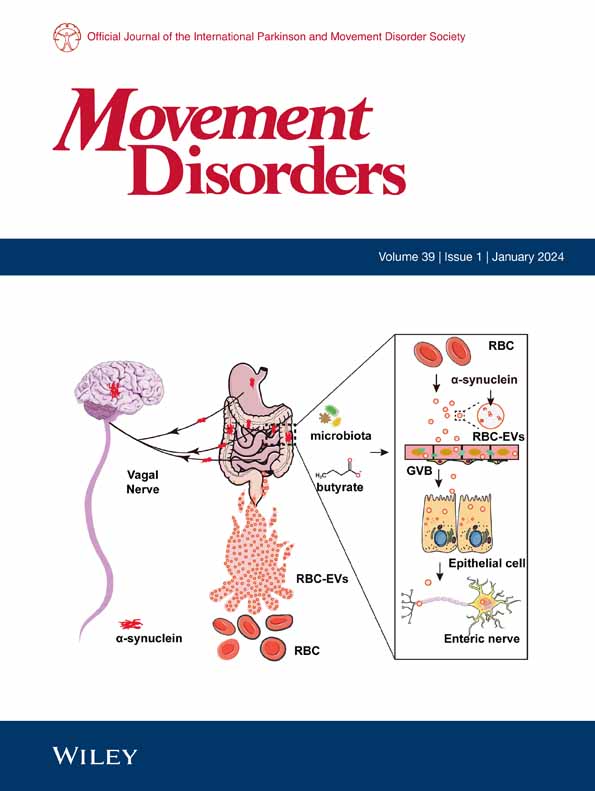Capture of Longitudinal Change in Real-Life Walking in Cerebellar Ataxia Increases Patient Relevance and Effect Size.
IF 7.4
1区 医学
Q1 CLINICAL NEUROLOGY
引用次数: 0
Abstract
BACKGROUND With disease-modifying drugs for degenerative ataxias on the horizon, ecologically valid measures of gait performance that can detect patient-relevant changes in trial-like time frames are highly warranted. OBJECTIVES In this 2-year longitudinal study, we aimed to unravel ataxic gait measures sensitive to longitudinal changes in patients' real lives using wearable sensors. METHODS We assessed longitudinal gait changes of 26 participants with degenerative cerebellar disease (Scale for the Assessment and Rating of Ataxia [SARA]: 9.4 ± 4.1) at baseline, 1-year, and 2-year follow-up using three body-worn inertial sensors in two conditions: (1) laboratory-based walking (LBW); and (2) real-life walking (RLW). In RLW, a context-sensitive analysis was performed by selecting comparable walking bouts according to macroscopic gait characteristics. Gait analysis focused on measures of spatio-temporal variability, particularly stride length variability, lateral step deviation, and a compound measure of spatial variability (SPCmp). RESULTS Gait variability measures showed high test-retest reliability in both walking conditions (intraclass correlation coefficient [ICC], ≥0.82). Cross-sectional analyses revealed high correlations of gait measures with ataxia severity (SARA, effect size ρ ≥ 0.75); and with patients' subjective balance confidence (Activity-specific Balance Confidence scale [ABC]: ρ ≥ 0.71). Although SARA showed longitudinal changes only after 2 years, the gait measure SPCmp revealed changes after 1 year with high effect size (rprb = 0.80). Sample size estimation for the gait measure SPCmp showed a required cohort size of n = 42 participants (n = 38; spinocerebellar ataxias [SCA]1/2/3 subgroup) to detect a 50% reduction in progression at 1 year with a hypothetical intervention, compared to n = 147 for SARA at 2 years. CONCLUSIONS Because of their ecological validity and larger effect sizes, real-life gait characteristics represent promising performance measures as outcomes for future treatment trials. © 2025 The Author(s). Movement Disorders published by Wiley Periodicals LLC on behalf of International Parkinson and Movement Disorder Society.捕捉小脑共济失调患者真实行走的纵向变化增加了患者相关性和效应大小。
背景:随着治疗退行性共济失调的疾病改善药物的出现,在类似试验的时间框架内检测患者相关变化的步态表现的生态有效测量是非常必要的。在这项为期2年的纵向研究中,我们旨在利用可穿戴传感器揭示对患者真实生活中纵向变化敏感的共济失调步态测量。方法采用三种体戴式惯性传感器,对26名退行性小脑疾病患者(共济失调评定量表[SARA]: 9.4±4.1)在基线、1年和2年随访时的纵向步态变化进行评估:(1)实验室行走(LBW);(2)真实行走(RLW)。在RLW中,根据宏观步态特征选择可比较的步行回合,进行上下文敏感分析。步态分析侧重于时空变异性的测量,特别是步幅变异性、横向步距偏差和空间变异性的复合测量(spmp)。结果步态变异性测量在两种步行条件下均显示出较高的重测信度(类内相关系数[ICC],≥0.82)。横断面分析显示步态测量与共济失调严重程度高度相关(SARA,效应大小ρ≥0.75);与患者主观平衡置信度有关(活动特异性平衡置信度量表[ABC]: ρ≥0.71)。虽然SARA仅在2年后出现纵向变化,但步态测量spmp在1年后出现变化,且效应量高(rprb = 0.80)。步态测量spmp的样本量估计显示,所需的队列大小为n = 42名参与者(n = 38;脊髓小脑共济失调[SCA]1/2/3亚组)在假设干预下检测到1年后进展减少50%,而SARA在2年后的n = 147。由于其生态有效性和更大的效应量,现实生活中的步态特征代表了未来治疗试验中有希望的性能指标。©2025作者。Wiley期刊有限责任公司代表国际帕金森和运动障碍学会出版的《运动障碍》。
本文章由计算机程序翻译,如有差异,请以英文原文为准。
求助全文
约1分钟内获得全文
求助全文
来源期刊

Movement Disorders
医学-临床神经学
CiteScore
13.30
自引率
8.10%
发文量
371
审稿时长
12 months
期刊介绍:
Movement Disorders publishes a variety of content types including Reviews, Viewpoints, Full Length Articles, Historical Reports, Brief Reports, and Letters. The journal considers original manuscripts on topics related to the diagnosis, therapeutics, pharmacology, biochemistry, physiology, etiology, genetics, and epidemiology of movement disorders. Appropriate topics include Parkinsonism, Chorea, Tremors, Dystonia, Myoclonus, Tics, Tardive Dyskinesia, Spasticity, and Ataxia.
 求助内容:
求助内容: 应助结果提醒方式:
应助结果提醒方式:


